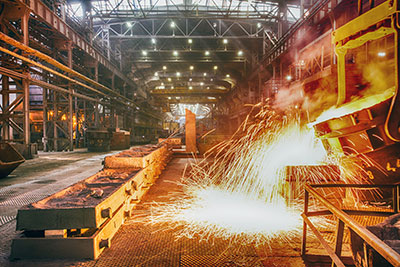Copper. The Noranda process.

Process
Is carried out in a modernized
Horizontal type converter
Pierce-Smith. Loading charge is produced
Through the hole in the end wall with
Using a high-speed feeder.
Oxygen-containing blast with a small
Enriched in a matte bath
(Similar to the horizontal
The converter).
The first
Continuous melting furnace and
Converting by the method of Noranda
Was intended for melting concentrates
On the blister copper. Copper was produced
Contaminated with impurities, but excessively
Rich slags (up to 12%) required a complex
And costly depletion. Therefore, in
Further the reactor was transferred to
Matte composition
To a white mat (70-75% Cu), from which
In a conventional horizontal converter
Get the blister copper.
Specific
Reactor capacity Noranda
Relatively high-23 t / (m2 day).
The SO2 content of the waste gas is
16-20% and they are processed into sulfuric
Acid. The duration of the campaign of the furnace
Is determined by the resistance of the lining.
Device
Melting furnace (reactor) process
The nose is shown in Fig. 15. The furnace has
The shape of the turning horizontally
Located a steel cylinder,
Lined with chromium-magnesium
Brick length of 21.3 and a diameter of 5.18 m. In
Places of greatest wear of lining
Installed water-cooled elements.
Air blast is fed through 60 tuyere
Holes with a diameter of 54 mm.
Fuse
To obtain black copper is characterized by
High content of copper in slags (up to 12
%) And magnetite (30%), impurities in the rough
Copper (As, Sb, Bi, etc.). Duration of the company
The reactor "Noranda" (Fig. 13) is determined
Resistance refractory in the tuyere zone.


